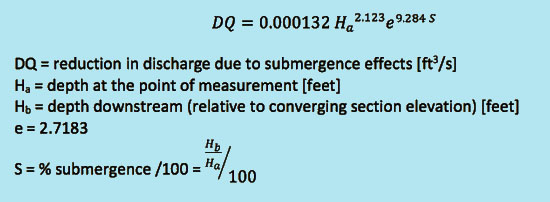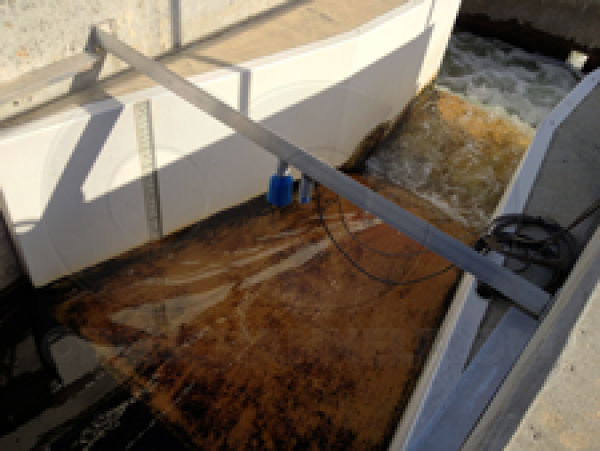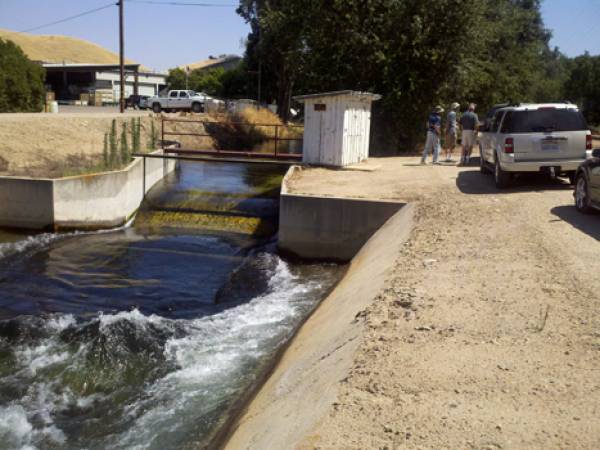This website uses a variety of cookies, which you consent to if you continue to use this site. You can read our Privacy Policy for
details about how these cookies are used, and to grant or withdraw your consent for certain types of cookies.
Submerged Flow in Parshall Flumes
Previous studies into submerged flow and Parshall Flumes (Parshall, 1928 and Skogerboe, et al, 1967) lead to the development of submergence ratios (where flow transitions from free to submerged flow) and a corrected discharge equation. These ratios and corrected discharge equation have been used for 50 years.
Investigations by Hilare Peak, a Hydraulic Engineer at the Hydraulics Branch of the Bureau of Reclamation in Denver, discovered a significant discontinuity in the discharge / submergence relationship not identified by previous researchers.
Peak’s investigations differed from Parshall’s / Skogerboe’s in that data was collected for the 1-foot Parshall Flume under investigation while maintaining a constant upstream head. Previous studies did not collect data under constant discharges, upstream heads, or submergence.
Peak’s recommendation was that 1-foot Parshall Flumes should only be operated below a submergence ratio of 86% (Hb/Ha). This would allow only one equation to be used to correct for submergence effects:

The limitation of only correcting for submergence ratio's up to 86% is in contrast to other recommendations that submergence can be corrected up to 95%.
Related Blog Posts
Explore more insights in our blog.

LOCATIONS IN ATLANTA, GA & BOISE, ID




